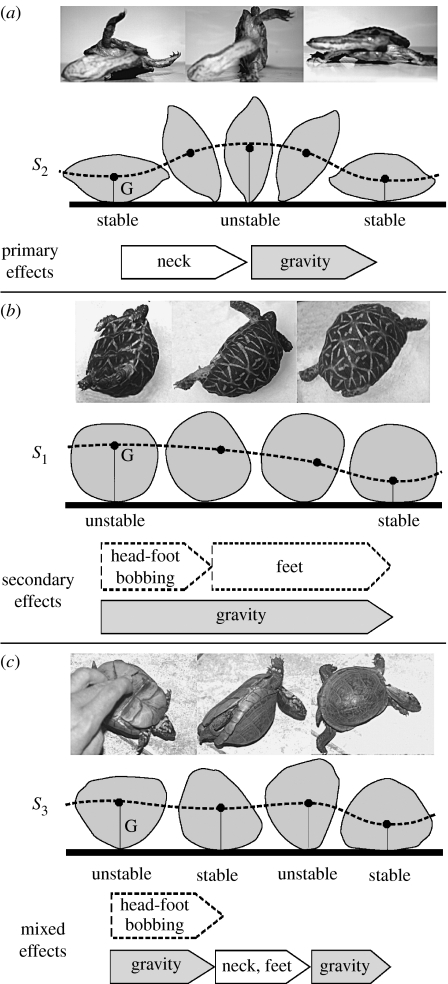Figure 6.
Righting strategies. Each strategy is characterized by the typical shape of the rolling main cross-section (grey contours) as well as the orbit (dashed line) of the centre of gravity G. Arrows denote key elements of righting, dashed arrows apply in presence of secondary energy barriers. (a) Flat turtles (R<∼0.6 inside class S2, photo: Hydromedusa tectifera): high primary energy barrier between stable and unstable equilibria is overcome by primary biomechanical energy resulting from vertical push with neck. Righting fitness is determined by primary geometric parameters (height/width ratio R, excess neck length N). (b) Tall turtles (R>∼0.8, inside or close to monostatic class S1, photo: Geochelone elegans): small, secondary energy barriers (resulting mainly from shell imperfections) are overcome by secondary sources of biomechanical energy: head- and foot-bobbing, push by feet. (c) Medium turtles (∼0.6<R<0.8, inside or close to class S3, photo: Terrapene carolina): in the first phase of roll, secondary barriers are overcome by dynamic (secondary) energy; in the second phase, the primary energy barrier is overcome by primary energy (push with neck, feet).

